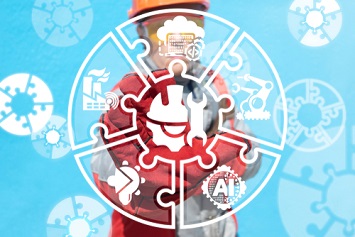The National Institute for Occupational Safety and Health (NIOSH) provided scientific input incorporated into recent federal regulations on truck drivers’ hours of service, the institute reported in an update on its Center for Motor Vehicle Safety (CMVS) program. The CMVS also contributed scientific input to the federal strategy on automated vehicles.
NIOSH also recently published updates on the institute’s Nanotechnology Research Center and Traumatic Injury Prevention Program.
The CMVS conducts research and develops strategies to prevent work-related motor vehicle crashes, emphasizing research into the oil and gas extraction; public safety; transportation, warehousing, and utilities; and wholesale and retail trade industry sectors. The center prioritizes research into motor vehicle safety for:
- Truck drivers;
- Drivers in high-risk occupations such as emergency medical services (EMS) workers, firefighters, and law enforcement officers, as well as oil and gas workers; and
- Drivers of light vehicles like passenger cars, pickup trucks, and SUVs.
The center has published a study of 70 companies’ road safety practices, as well as a study of drivers’ willingness to use advanced driver assistance systems, and completed an evaluation of a motor vehicle safety program in a large metropolitan police department. The center soon will publish and begin implementing its 2020–2029 strategic plan.
Nanotechnology Research
NIOSH’s Nanotechnology Research Center (NTRC) conducts research to understand the potential effects on human health of exposure to engineered nanomaterials and develops methods to control or eliminate exposures. Nanoparticles are extremely small particles—between 1 and 100 nanometers—designed to have certain new or unique characteristics like elasticity, strength, or reactivity.
The NTRC identifies new types and uses of engineered nanomaterials through market forecasting and research, technology surveillance, and partner and stakeholder input. It also provides businesses with guidance they can use to keep their workers safe; develop public trust; and, in turn, accelerate the commercialization of nanomaterials. It also conducts field investigations and epidemiological studies to better understand nanomaterial workers’ exposures and risks.
The NTRC published 80 journal articles in peer-reviewed scientific journals in 2019 and conducted a survey to gather information about companies’ safety and health practices related to the use of engineered nanomaterials.
The center expanded field team efforts to evaluate occupational health and safety of 3D printers used in industrial and school settings, resulting in an increase in field assessments from 8 in 2018 to 20 in 2019.
The center plans next to publish a Current Intelligence Bulletin: Health Effects from Occupational Exposure to Silver Nanomaterials and workplace posters on 3D printing with metal powders and 3D printing with filaments. The NTRC also will collaborate on the development of international standards with ASTM International, the Organization for Economic Co-operation and Development (OECD), and the International Organization for Standardization (ISO) Technical Committee (TC) 229. It also will submit a draft technical report for external peer review on approaches for developing occupational exposure limits or bands for engineered nanomaterials.
Traumatic Injury Prevention
The Traumatic Injury Prevention Program partners with academia, government agencies, industry and labor, and professional organizations and trade associations to reduce and prevent work-related injuries and deaths. The program’s research focuses on the following areas:
- Addressing the leading causes of work-related traumatic injury,
- Reducing work-related injuries among high-risk occupations and vulnerable worker populations, and
- Understanding emerging technologies in the workplace.
The program published an analysis of drug overdose deaths at work from 2011–2016 and disseminated its findings as infographics on social media. It also conducted the Centers for Disease Control and Prevention’s (CDC) and NIOSH’s first external crowdsourcing competition to improve machine learning algorithms for the coding of injury narratives.
The program next will publish results from a collaborative evaluation of the U.S. Air Force Fall Prevention Program’s impact on reducing work-related fall injuries and fund workplace collaborative robot research through a partnership with the National Aeronautics and Space Administration, National Science Foundation, and U.S. Department of Agriculture.

